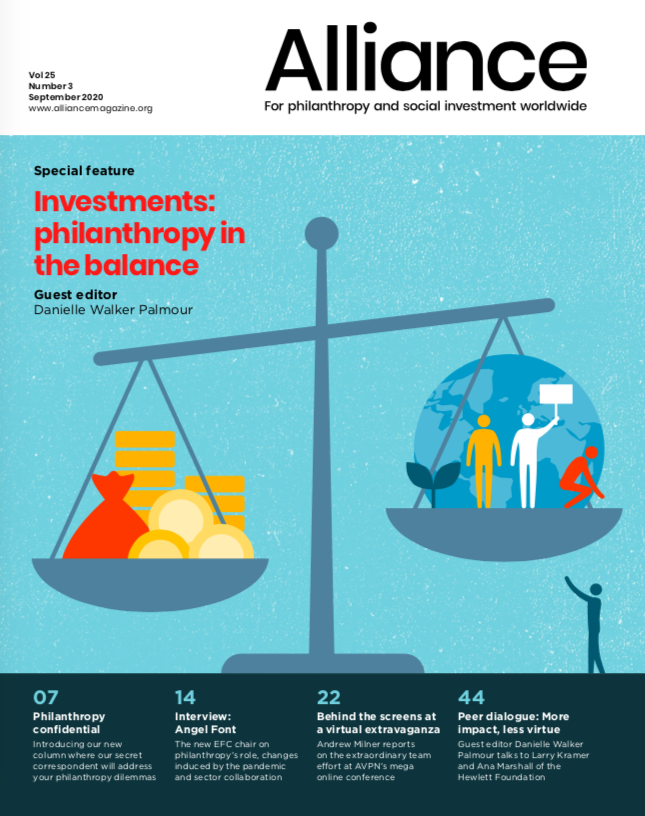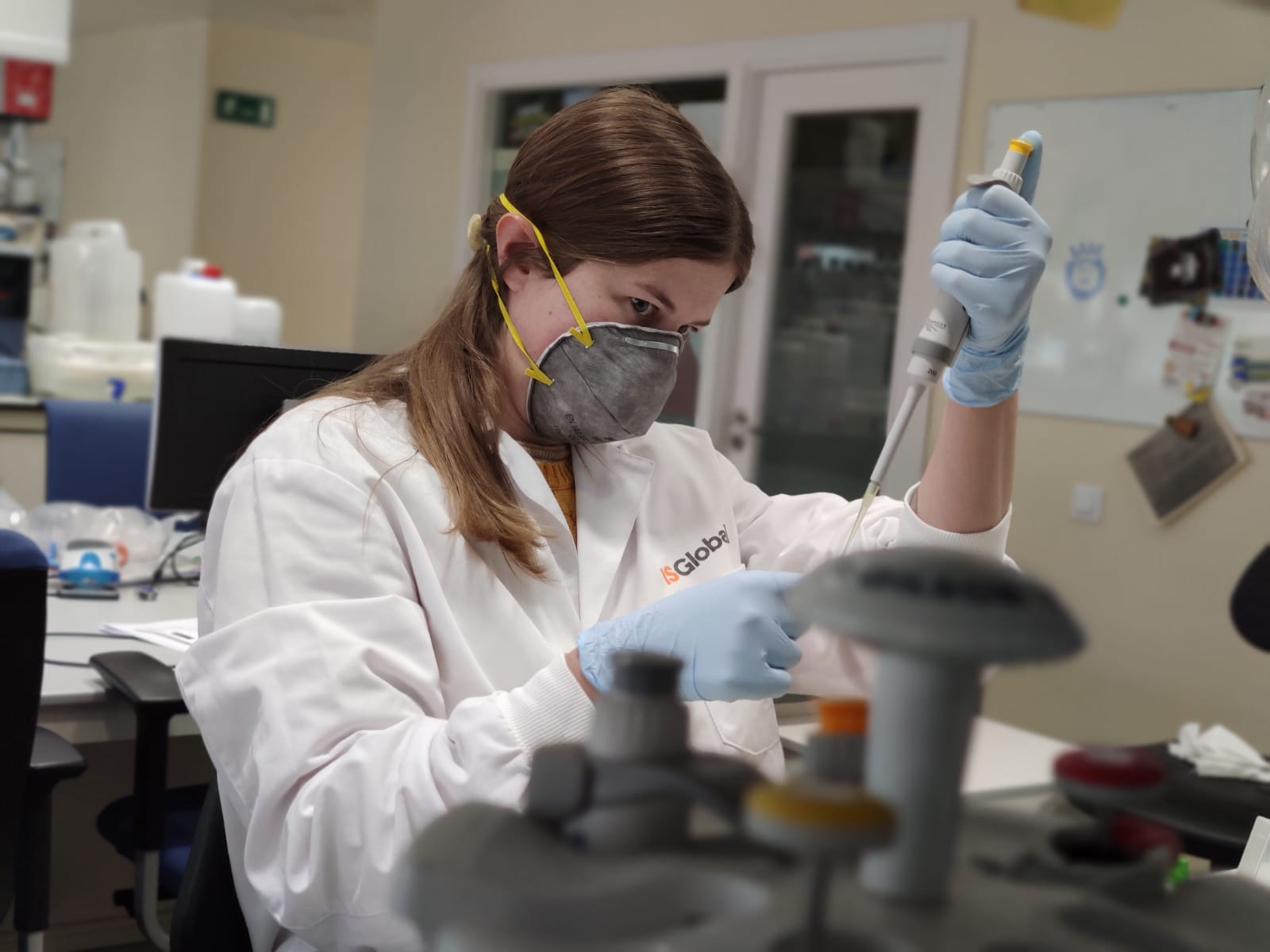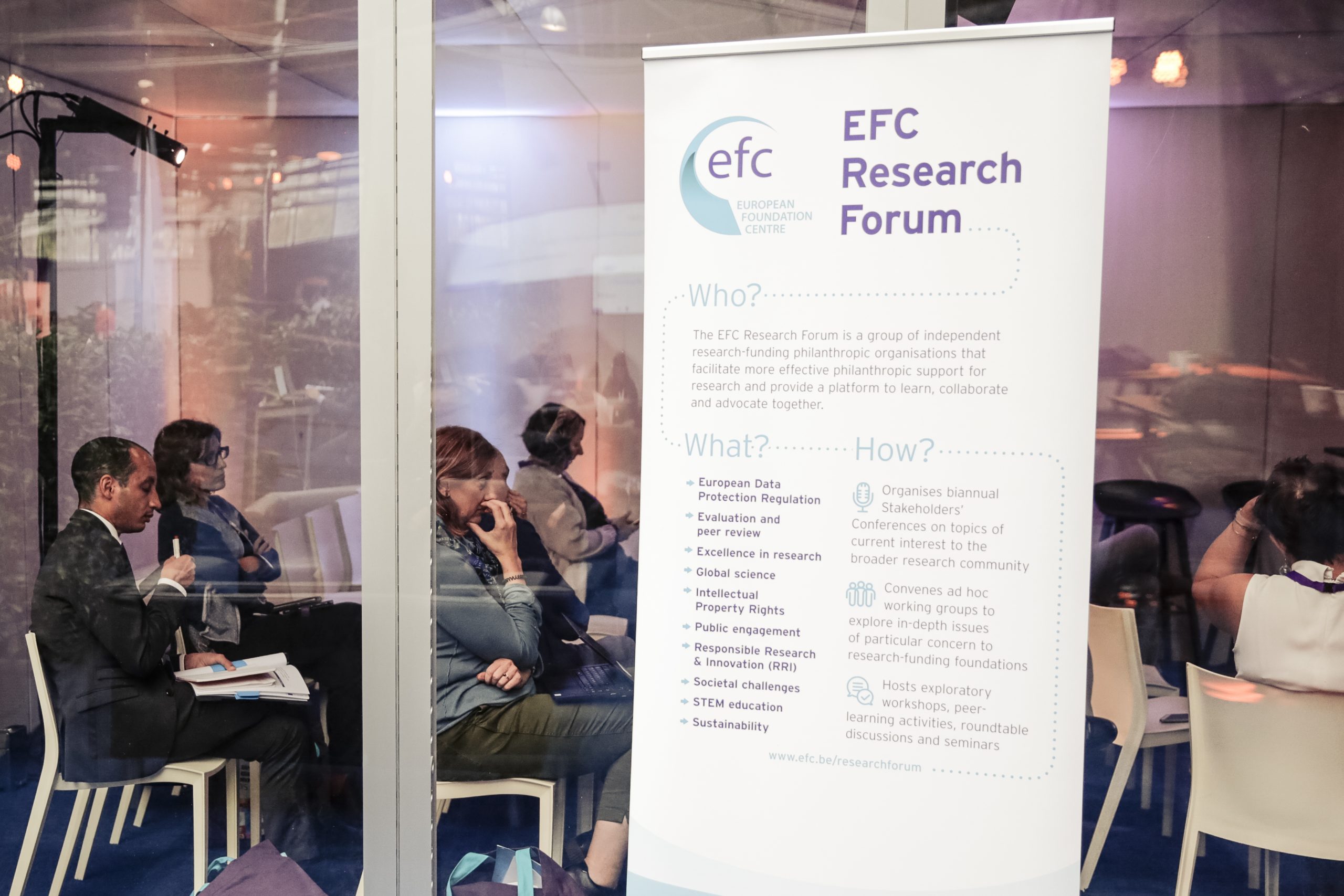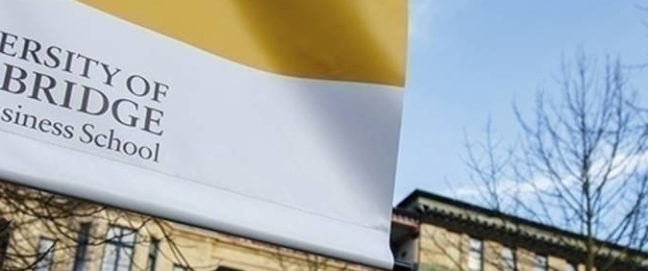It’s transition time at the European Foundation Centre (EFC) with the arrival of a new chair and a new Chief Executive, the first female in the role. Here the new chair Angel Font, corporate director of Scientific Research at Spain’s “la Caixa” Foundation, talks to Alliance about philanthropy’s role, the changes the current pandemic will induce and the need for collaboration within, and even more importantly across sectors.
A European style of philanthropy
Alliance: How do you feel about assuming the role of chair of the European Foundation Centre in a moment of a global pandemic?
Angel Font: It was very emotional and very strange as it was the first time we had met virtually at an AGA. But I am very happy and honoured by the opportunity because we at “la Caixa” Foundation have been involved in the EFC for 15 years. We have probably got from them more than we have given because, for us, thematic networks have been our main area of involvement especially on scientific and cultural issues, but also on the social ones.
What are you hoping to achieve as chair?
This is a crucial moment for the world, but also the EFC. We are in the middle of selecting a new chief executive,[1] which is probably the most important decision an organisation can take. Thinking in the more medium term, the next three years are also a special moment for philanthropy. For me, using private resources independently from any institution for the common good is a powerful and increasingly relevant idea. The sector is more professional, it has more resources, it’s geographically wider, and it is also stronger within countries. The corporate sector is also pushing towards philanthropy so I think it’s a special moment to recognise that philanthropy is not just something good to have, but is a key actor in public welfare.
How do you want to see philanthropy develop?
People used to talk about the idea of the Private Public Partnership, the three Ps – I would like to add another P for philanthropy. I think philanthropy is the best and safest place to convene together private interest and public institutions, because we are in the middle. We are acting as a private institution but for the common good so we are part of both. I think in the future, such partnerships will have to include philanthropy.
We have become more diversified… and we are facing more demands – poverty, unemployment and elderly and vulnerable people struggling to cope alone – those kinds of programmes have to be strengthened in the coming years.
Some of the work the EFC has already been doing with others is promoting collaboration between philanthropic foundations and policymakers in European institutions. How do you see that developing in the coming years?
I think it’s really relevant with all policymakers throughout the different countries but the EFC has to put the focus on European institutions, because it’s the common interest. It was very important for me last year when we were invited to contribute to the European Commission’s inaugural Research & Innovation Days, by co-designing with them four key sessions exploring the role of philanthropy as a partner in research and innovation. That was a clear recognition that philanthropic institutions can also play a leading role with European Commission programmes.
Another example is in the Horizon Europe framework. It recognises that foundations have a role to play in research alongside universities and research centres. For example, at “la Caixa” Foundation, we have doctoral and postdoctoral Fellowships Programmes that have the support of the European Commission. Our role is not to compete with universities or research centres but we can put in our efforts, our strategy, our staff, our professionalism in a way that allows European money to have more impact. This is the vision we have. A foundation could be the best place to do a pilot for a programme that the European Commission then develops, for instance. We can use our resources and money and deliver results for the Commission to work with.
Do you also see a role that’s maybe being played more in American or British philanthropy circles, with philanthropy not just as a complement to state structures or international institutions, but actually holding them to account? Is there a tension between those two roles?
It is not in our DNA to criticise, but we have a view and in some cases where we don’t like public policies, we have the right to say so. But I think European philanthropy has a lot to learn from the Anglo-American model. There’s a European style of philanthropy that is based on our values. Those are not so different from American values but the societies are slightly different and philanthropy reflects society. What I see in Spain and in other countries and what I expect to see at the European level, is more collaboration between philanthropy and the public sector.
…it’s a special moment to recognise that philanthropy is not just something good to have, but is a key actor in public welfare.
What do you mean by a European style of philanthropy?
Philanthropy in Europe in its origins is more connected with institutions that have a public outlook. In America, they are more connected with private wealth or corporations. In Europe, too, business is behind philanthropy but I am thinking of the public corporations behind German foundations, or the situation in the Nordic countries where philanthropy is more or less linked to the state. There is a European way and we have something to offer the rest of the world.
Your vision of an expanded role for European philanthropy comes at a time when there’s growing criticism of philanthropy in some quarters. Philanthropy is sometimes perceived as a product of inequality. Particularly against the backdrop of the Covid-19 pandemic, do you foresee tensions navigating between those criticisms and having a more visible and expanded role?
I see quite the opposite. What I perceive is that European foundations have strong support from society, which comes from our credibility. I understand that foundations’ money or power could be a focus of criticism, but what I see is that normally people support the idea of having philanthropic institutions. As I said, I would like philanthropy to be seen by society as a tool to create increased welfare. To give the example of my own organisation, we were set up in 1904 at a time when there was a lot of unrest and many strikes in Barcelona. The police were called in and there were many workers injured or killed so the people of Barcelona – businesses and other organisations – stepped in to take care of the victims of the violence and also to create the first private pension fund in Europe, set up as a savings bank. That’s our DNA. It was a private initiative to support public welfare. Twenty years later, the pension fund was transferred to the government and began to be managed publicly. It was like a pilot and, for me, that story is a powerful example of how civil society can support the idea of public welfare.
What has been the highlight of your time at “la Caixa”?
I’ve had various roles at “la Caixa” Foundation, but what I’d highlight now is being part of the team that led our transformation from a savings bank to an independent foundation. We have 115 years of history but we only became an independent foundation six years ago. We separated the activity of the commercial bank and now the foundation owns part of the bank and also has assets in different companies.
And the foundation now spends half a billion euros a year?
Yes, and we expect to maintain that level. It will be hard because the businesses we invest in are facing hard times, but we have become more diversified, we are not dependent just on one source and we are facing more demands – poverty, unemployment and elderly and vulnerable people struggling to cope alone – those kinds of programmes have to be strengthened in the coming years.
I think philanthropy is the best and safest place to convene together private interest and public institutions, because we are in the middle.
What other priorities do you have for the EFC?
From my own experience and from talking to different members, all of us value particularly the activities of our thematic networks and peer learning. Those are really our core activities and we would like to enlarge membership so we can offer them to a bigger number of institutions all over Europe. We would also like to have more members from other European countries. We would like Spanish membership to grow but also we’d like a bigger presence from the Balkans, eastern and northern Europe.
Your vice-chair, Axelle Davezac, is French, and your treasurer, Christina Lambropoulou, is Greek, so we’re seeing colleagues from Spain, Greece and France in the leading roles of your management committee. Presumably that will affect some of those relationships?
Well, I am not representing Spain, I am representing the whole of European foundations but of course every one of us brings some distinctive strengths. I would also like to highlight that Marika Hedin from Sweden is coming on to the management committee so it’s a good balance in terms of gender and of geographic distribution, and we also have Antti Arjava from Finland, Vesna Bajšanski-Agić from Bosnia and Herzegovina and Rui Esgaio from Portugal.
There’s often been discussion about the extent to which the EFC has relied on certain American funders. With your vision of an expanded base of European foundations, do you think that such funding will not be necessary in the next few years?
We’ve always been grateful for the vision that some American foundations had 30 years ago and their continued work in supporting European philanthropy. It’s something we’d like to keep, not only for what it represents in financial terms, but for what it represents in the idea of a global, rather than a narrowly European vision. We would like to be a reference in that respect for other regions of the world, so these close ties with the American foundations are something I expect we will maintain and reinforce. I’d also highlight our links with other regions, with China, with Russia, with South America. We were also supposed to launch a joint initiative with AVPN this year focused on India, which of course has been postponed.
 EFC members have been involved in different ways in the response to the pandemic. What is your reaction to what you’ve seen from European philanthropy and what do you think it might lead to?
EFC members have been involved in different ways in the response to the pandemic. What is your reaction to what you’ve seen from European philanthropy and what do you think it might lead to?
Before the pandemic, I think inequality, global health and the environment were the three pillars of European philanthropy. That has been reinforced by the crisis. There is nothing specifically new in those efforts. What is new is the degree of collaboration between foundations, mobilising new resources and flexibility. Flexibility in agreements with partners to redeploy budgets, to move timeframes – I haven’t seen that as much in the last years as I have in the last months. We have no exact figures on the scale of the response, though a recent McKinsey report estimates that philanthropy in Europe had already committed more than €1.1 billion by May 2020. But when we can see the big picture of European philanthropy’s response, I’m guessing we will see the biggest effort of the last 10 years.
We’ve always been grateful for the vision that some American foundations had 30 years ago and their continued work in supporting European philanthropy. It’s something we’d like to keep.
This year’s EFC annual conference will now take place in Vienna in early June next year. Will you be changing the agenda to reflect some of the new activities and energy around the fallout from the pandemic?
The motto of the Vienna meeting was ‘Foundations and the new normal’, a term which has been widely used because of the coronavirus, so in some way we were on the right track for dealing with some of these issues. But of course we have to adapt. The content will be slightly different and the way of conducting the meeting will also be different. All of us would like to be together, after a year of not seeing each other, but there’s also the possibility of having more online participation, so it will be mixed. The idea of a mixed format is a legacy of the pandemic.
The AGA was also going to be an opportunity to say goodbye and thank you to outgoing chief executive, Gerry Salole. What do you think Gerry’s most notable contributions have been?
I’d highlight his capacity to keep the candle of philanthropy burning. In my opening speech as chair, I said that for me the EFC has to be a lighthouse. Foundations are like ships in a storm and the lighthouse guides us to harbour. If the EFC is a lighthouse, then Gerry has been the best lighthouse man.
“la Caixa” Foundation hosted a meeting of WINGS in Barcelona in 2018, and a DAFNE gathering in Madrid earlier this year. Is that a deliberate attempt to signal to others the importance of supporting philanthropy infrastructure both in a European and a Spanish context?
We are now the first foundation in Spain, in terms of budget and assets, and one of the most important ones at European and global level. I want us to take the lead and be a major philanthropy institution in the world. It’s not a question of paying out the most money, it’s about being the most useful organisation for society. We don’t like to shout about it at “la Caixa” Foundation because we want to be judged by the facts and our actions, so we don’t often host events.
Even so, you have supported events that bring philanthropic organisations together to support the development of an ecosystem in philanthropy. That’s quite a progressive step, because the infrastructure of philanthropy, including the infrastructure of philanthropy communications and philanthropy-focused media, is notoriously under-resourced.
It’s always a balance, because our board of trustees always wants us to put the focus on programmes and less on the infrastructure because they want us to be useful. But on the other hand, we know we are the biggest in terms of financial size and we don’t want to put ourselves in another category from other foundations because of that. We can also learn a lot from local or smaller foundations, so we love to be involved in that kind of meeting and organisation and to use our resources to support the movement. We cannot do anything by ourselves even if we were double the size we are now, so it’s important to collaborate with other philanthropic institutions. For me the message is clear, if the society has more philanthropic institutions, it will be for sure a better society.











Comments (0)